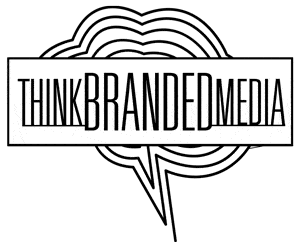Boosting B2B Sales In Manufacturing Through Visual Storytelling
Key Takeaways
- Visual storytelling is a powerful tool for B2B manufacturing companies to connect with clients, simplify complex concepts, and boost sales.
- Different types of videos can be used effectively, including animated educational videos, product demonstrations, customer testimonials, and behind-the-scenes content.
- A well-defined visual storytelling strategy is essential for success.
- Videos should be integrated into your digital marketing strategy and optimized for search engines.
- TrackingA technique in VFX used to track the movements of objects and camera through different frames of fil... the performance of your videos is crucial for optimizing your strategy and demonstrating ROI.
In the dynamic world of B2B manufacturing, standing out from the competition requires more than just superior products and services. It demands a compelling narrative that resonates with your target audience. Visual storytelling has emerged as a powerful tool for manufacturers to connect with clients on an emotional level, simplify complex concepts, and ultimately, boost sales.
This blog post explores how U.S. businesses, from startups to large corporations, can leverage the power of visual storytelling—often in partnership with a professional video production company Dallas—to enhance their brand and drive growth.
Benefits Of Visual Storytelling In B2B Manufacturing
Visual storytelling offers a multitude of benefits for B2B manufacturing companies:
- Differentiating Brand Identity: In a crowded marketplace, visual storytelling helps carve out a unique identity. Branded video content production allows your company’s values, culture, and expertise to shine, setting you apart from competitors and creating a lasting impression.
- Simplifying Complex Concepts: Manufacturing processes can be intricate and technical. Utilizing visuals like animations, event video production services, or infographics makes these complexities digestible, clearly illustrating the value of your offerings.
- Enhancing Emotional Connections with Audience: B2B isn’t just about data; it’s about building relationships. Visuals evoke emotions and build trust, which are crucial in B2B sales. By sharing stories that highlight the human element of your business, you can create a stronger connection with your audience.
- Growing Online Presence and Visibility: Engaging visual content is more likely to be shared on social mediaPlatforms that enable users to create and share content or to participate in social networking, ofte... and other online platforms, increasing your brand’s visibility and reach. Optimized videos can also improve your search engine rankings, making it easier for potential clients to find you.
Types of Videos Used in B2B Manufacturing Marketing
Several types of videos can be effectively used in B2B manufacturing marketing:
- Animated Educational Videos: These videos are ideal for explaining complex manufacturing processes, product features, or industry trends in an engaging and easy-to-understand manner.
- Product Demonstrations and Tutorials: Showcase your products in action and provide step-by-step instructions on how to use them effectively. These videos can help potential clients visualize the benefits of your products and address any concerns they may have.
- Customer Testimonials and Case Studies: Feature satisfied customers sharing their experiences with your products or services. These videos provide social proofA psychological phenomenon where people assume the actions of others in an attempt to reflect correc... and build trust with potential clients.
- Behind-the-Scenes Content: Give your audience a glimpse into your manufacturing facilities, your team, and your company culture. This builds transparency and helps humanize your brand.
Developing A Visual Storytelling Strategy
A well-defined visual storytelling strategy is essential for success. Here’s how to develop one:
- Identifying Target Audience: Understand their pain points, their information consumption habits, and their preferred visual formats.
- Setting Clear Objectives and Goals: What do you want to achieve with your visual storytelling efforts? Increase brand awareness, generate leads, or drive sales?
- Planning Video Content and Formats: Based on your target audience and objectives, determine the types of videos you will create and the formats you will use (e.g., short-form videos for social media, longer-form videos for your website).
- Creating Authentic and Relevant Narratives: Your stories should be genuine, relatable, and relevant to your target audience. FocusAdjusting the camera lens to make the subject clear and sharp in the image. on the challenges they face and how your products or services can help them overcome those challenges.
Implementing Visual Storytelling In Digital Marketing
To maximize the impact of your visual storytelling efforts, integrate videos into your digital marketing strategy:
- Integrating Videos in Multi-Channel Campaigns: Use videos across multiple channels, including your website, social media, email marketingThe act of sending a commercial message, typically to a group of people, using email. In its broades..., and online advertising.
- Utilizing Social Media for Wider Reach: Share your videos on social media platforms like LinkedIn, YouTube, and Twitter to reach a wider audience.
- Leveraging SEO to Enhance Video Discoverability: Optimize your videos for search engines by using relevant keywords in your titles, descriptions, and tags.
Measuring The Impact Of Visual Storytelling
Tracking the performance of your videos is crucial for optimizing your strategy and demonstrating ROI:
- Key Performance Indicators (KPIs) for Video Marketing: Track metrics like video views, engagement (likes, comments, shares), website traffic, lead generation, and conversion rates.
- Analyzing Engagement and Conversion Metrics: Use analyticsThe systematic computational analysis of data or statistics. In marketing, it's often used to analyz... tools to understand how your audience is interacting with your videos and how those interactions are translating into business results.
- Adjusting Strategies Based on Data Insights: Use the data you collect to refine your visual storytelling strategy and create more effective videos in the future.
Incorporating Personalization And Authenticity
Today’s buyers expect personalized and authentic content experiences. By incorporating these elements into your visual storytelling strategy, you can more deeply engage your audience.
Creating Tailored Content for Diverse Audiences: Personalize your videos to resonate with specific segments of your target audience.
- Highlight the Human Element: Emphasize the stories of the people behind the products and the impact they have on the world.
- Address Sustainability: Showcase how visual storytelling can be used to promote sustainable manufacturing practices.
Elevate Your Manufacturing Brand With Think Branded Media’s Expert Visual Storytelling
In the B2B manufacturing landscape, visual storytelling is no longer a luxury; it has become a necessity. By embracing the power of corporate video production Dallas, you can captivate your audience, build stronger relationships, and drive significant growth for your business. Start crafting your visual narrative today and unlock the potential of B2B visual storytelling in manufacturing.
Ready to tell your brand’s story and boost your B2B sales? Contact Think Branded Media today to bring your visual storytelling strategy to life.
Frequently Asked Questions
How can manufacturing companies use video to attract clients?
Manufacturing companies can attract clients through engaging product demos, educational animations, authentic customer testimonials, behind-the-scenes footage, and event highlight videos. These visuals help showcase value, build trust, and humanize the brand.
What length of video content is most effective for B2B manufacturing marketing?
Short-form videos (around 1-2 minutes) are most effective for social media and quick engagement, while longer videos (3-5 minutes) are suitable for detailed explanations, product tutorials, and client testimonials.
How often should manufacturing companies produce new video content?
Consistency is key; aim for at least one new piece of video content per month. Regular video updates help maintain audience engagement, boost SEO, and reinforce brand messaging over time.

